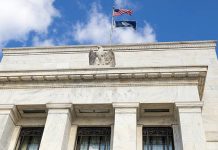Key insights from the week that was.
This week saw the release of Australian partial data related to next week’s Q3 GDP report. Meanwhile, in the US and Europe, the focus remained on COVID-19’s spread and how it can be suppressed.
The construction work done survey was the first of two preliminary reads for Q3 investment. The 2.6% decline reported was between our and the market’s expectation and continues the downtrend present since 2018 – initially because of declining residential construction, and more recently COVID-19 disruptions.
The positive surprise versus our expectation for Q3 was due to residential construction. This sub-sector has recently surprised in its resilience, and dwelling approvals point to a constructive outlook despite the dramatic decline in population growth related to border closures. Public investment has been and should remain a positive as governments look to offset weakness in other areas of the economy such as in private non-residential construction – where approvals data points to further weakness ahead.
The CAPEX survey subsequently provided a perspective on equipment investment in Q3. Here the Q3 fall was much smaller than we had anticipated at just -2.2%. Investment in mining and services was down around 3% in the quarter, manufacturing -1%. This positive surprise notwithstanding, the outlook for investment remains poor, with the fourth estimate for 2020/21 spending still down 10% on the comparable figure for 2019/20 (estimate 3 three months ago was -12.6%).
Within the industry detail, while we did see a material upward revision in planned investment in manufacturing and services over the last 3 months, the investment intentions of miners deteriorated. We expect the latter outcome will reverse in the months ahead as the global recovery gathers pace, increasing anticipated commodity demand. The continued re-opening of our own economy should also provide for further upward revisions in services and manufacturing investment plans.
For Q3 GDP next week, we have revised up our forecast from 1.8% to 3.0%; however, that still leaves GDP 3.9% lower than a year ago. All the detail behind this headline forecast can be found in our preview.
This week also saw the release of Westpac’s latest Housing Pulse. This edition highlights the building confidence in housing and provides an assessment of regional/ sub-regional price performance. Both confidence and the price action seen to date argue for a stronger price growth profile. We have responded by pulling-forward the circa 15% gain in prices previously seen in 2022 and 2023 by a year to 2021 and 2022. Gains thereafter will be dictated by success in healing the labour market and the policy mix, as discussed by Chief Economist Bill Evans earlier this week.
Staying with housing, but turning to New Zealand, this week saw the NZ Minister of Finance propose house prices be added to the variables that the RBNZ is to minimise unnecessary instability in. This comes as a result of concern over the strong gains in house prices being supported by ultra-low interest rates – deemed necessary by the RBNZ to accelerate consumer inflation back towards target and to counter upward pressure on the NZ dollar as well as downside risks around domestic employment. This is clearly a complex topic which requires in-depth discussion, as provided by New Zealand Chief Economist Dominick Stephens.
Finally, to the US and Europe. In the US, the focus of the short trading week ahead of Thanksgiving and Black Friday shopping was on the conflict between the immense cost of the pandemic currently being experienced and the hope vaccines offer, albeit likely not till mid-to-late 2021.
Clearly, with the daily new case count around 180k ahead of Thanksgiving, there is a real risk of a further spike in cases following the holiday period. With hospital capacity already extremely stretched in many states, any significant increase in cases from here is likely to trigger additional restrictions and impinge on growth prospects in early-2021.
While the November FOMC minutes gave little away ahead of the December FOMC meeting, given new restrictions are being imposed on the economy; initial jobless claims are now rising; and considerable uncertainty remains over the 3-6 month outlook, the provision of additional support for the economy at the December meeting seems justified, particularly as the FOMC’s inflation and full-employment mandate is a long way from being met, and fiscal policy is absent.
In Europe and the UK, the past fortnight has shown evidence of success in slowing the virus’ spread. Consequently, the UK this week announced another change in the approach to lockdowns, with a tiered system of restrictions to again be adopted and some additional flexibility for Christmas celebrations given. That said, stringent restrictions are still set to remain in place in the UK into 2021. European countries are likely to follow a similar approach. Economic risks and a need for additional policy support will therefore also remain in place for the region to at least the end of Q1 2021, when it is hoped that successful vaccine deployments will quickly suppress the virus.













